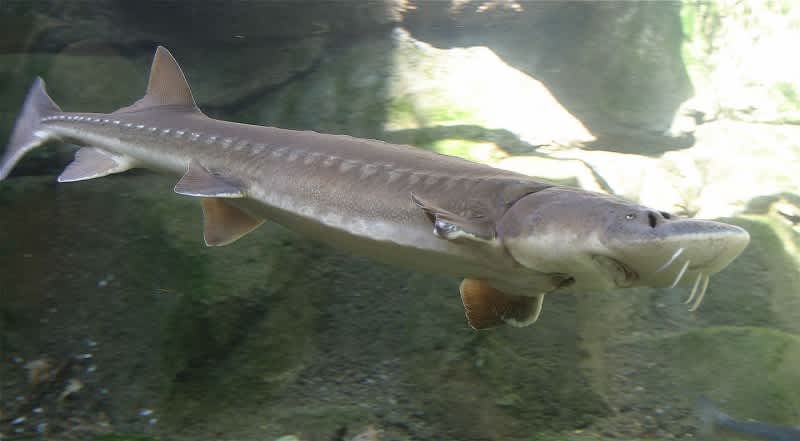Study: Sturgeon Produce “Sonic Thunder” to Aid Reproduction
OutdoorHub Reporters 12.07.14

A study recently published in the Journal of Applied Ichthyology has turned up some interesting ideas on sturgeon, one of the oldest and largest fish fish species in North America. Anglers who have been around these prehistoric fish may have noticed that sturgeon are vocal creatures and will occasionally produce a faint drumming sound called “sturgeon thunder.” Although researchers are still unsure exactly how the fish produce these low-frequency sounds, they are now being compared to similar behaviors by animals such as whales or elephants.
“These fish have been anecdotally known by biologists and sportsmen to produce low-frequency sounds
during bouts of spawning, and local Menominee tribal traditions associating sturgeon with thunderstorms in the spring suggest an indigenous knowledge of sturgeon sound production during spawning that predates Western settlement,” researchers wrote in the study, which included scientists from the Wisconsin Department of Natural Resources, Nelson Institute of Environmental Studies, and the University of Wisconsin-Madison.
It was only recently that biologists have confirmed that these sounds are used to aid in reproduction, specifically in the timing of gamate release. According to the study, the low-frequency sounds—which sound like a crisp knock—may attract male sturgeon to the presence of females. It is simply one of the many tools that has allowed this ancient fish to survive since the age of the dinosaurs.
“Along with known physical cues from river temperature and substrate, the fish likely combine visual, acoustic and electrical sense information into an adaptable suite of wide-ranging sensory knowledge, a powerful suite of perceptions that has undoubtedly assisted lake sturgeon in successfully propagating their species for 150 million years,” Chris Bocast, lead author on the study, told The Post Crescent.
Bocast said the noises were similar to a human snapping their fingers or whistling—an attention-getting sound. Sturgeon have been observed to make the drumming noise as far away as 17 feet from another fish, and scientists have a couple of ideas on how exactly the fish make the sharp noise. The prevalent theory is that sturgeon are rubbing together different bones or sections of their body to produce the sounds. Yet observations so far had been made mostly in a tank, and researchers said that studying the behavior in the wild will allow to learn more about how it effects sturgeon breeding.
Knowing how sturgeon breed may be vital to conservation efforts. Although the species has an extensive range throughout North America, Europe, and Asia, nearly all sturgeon species are either endangered or vulnerable. Wildlife departments and non-profit conservation groups are working to reverse this trend and introduce wild sturgeon back into many of their natural habitats. The primary cause for the sturgeon decline remains habitat loss, the effects of dams, and, in some areas, poaching.

